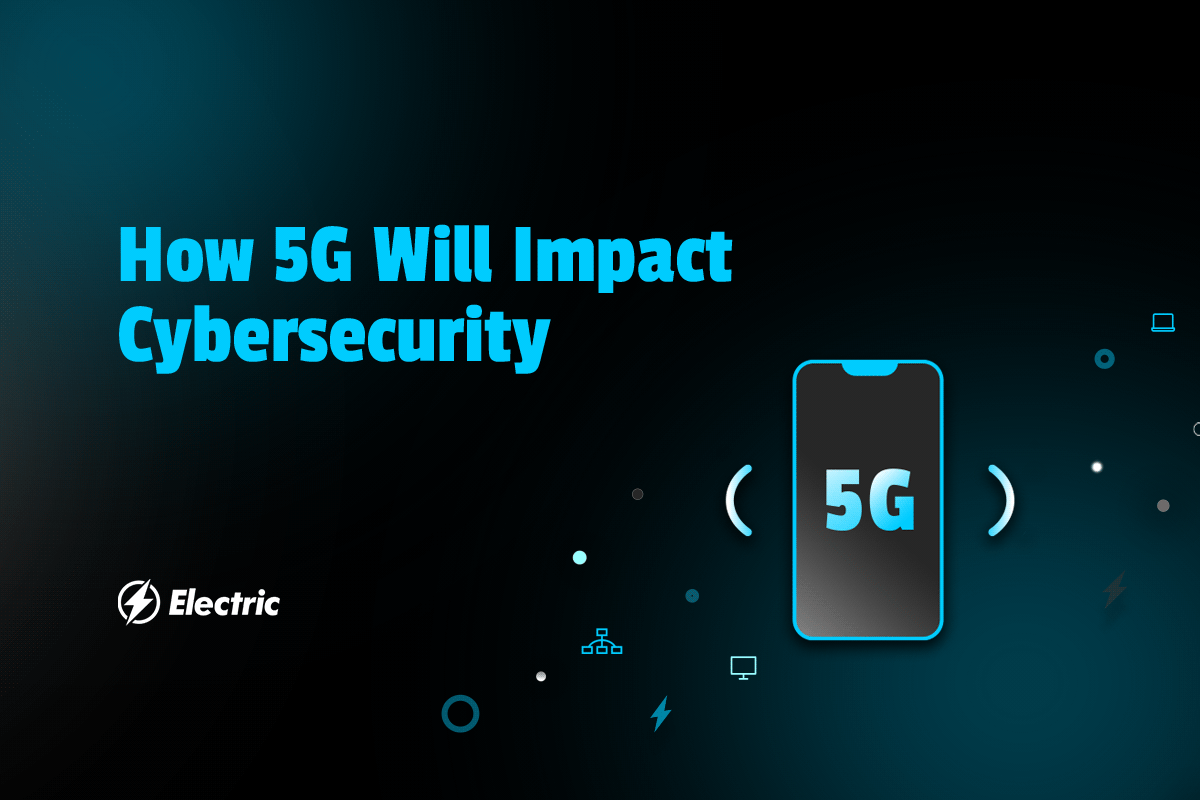
The deployment of the fifth-generation (5G) wireless technology will transform how people live and work. It will unlock the potential for emerging technologies from virtual reality, autonomous vehicles, and the Internet of Things (IoT). However, it will likely take years before the world realizes full-scale adoption to the latest 5G wireless connectivity.
What Are the Benefits of 5G?
5G promises several benefits, including:
-
High data speeds that are 100 times faster than current 4G
-
Ultra low latency
-
Massive network capacity
-
Increased reliability
-
Enhanced user experience
-
Increased availability.
One of the main benefits to business specifically will be 5G’s high efficiency and high performance, which will provide quicker access to information and better experiences among users.
5G Security Concerns
Despite the many benefits it brings, 5G will also come with its share of challenges. To start, the cyber threat landscape and attack surface area will expand considerably.
5G will also involve the conversion to a nearly all-software network; thus, implementing future upgrades will be similar to installing new updates to a computer program or smartphone. As a result, there will be many cyber vulnerabilities, and security experts will have to cope with revising tools and procedures to ensure a network is secure.
While the world gears up for 5G, there must be a greater focus on implementing proper cybersecurity protections to ensure it goes smoothly. More specifically, many companies will have to amend their current cybersecurity approaches to deal with the 5G-related emerging technologies.
Below is a review of the 4 most important 5G security concerns.
1. Rapid Proliferation of Vulnerable Devices
5G technology will enable the connection of many billions of devices, but the increased number of connected devices will subsequently also increase vulnerability. Most of these devices lack baked-in cybersecurity, or are managed by applications which are similarly poorly secured.
Even devices like smart thermostats, door locks, and lights pose threats to physical safety if they are compromised by an actor with malicious intent. As manufacturers release more of these poorly secured devices to the market, these endpoints will be susceptible to attacks due to difficulties in updating them regularly. A recent report from Palo Alto Networks indicates 98% of all Internet of Things (IoT) device traffic is unencrypted and exposes personal and confidential information on the network. Additionally, 57% of IoT devices are prone to medium or high-level attacks.
All these connected endpoints will be crucial to secure as hackers could access the greater network through them to infiltrate additional parts of the network, including other connected IoT devices. Therefore, it is recommended to review the mitigation tactics for all devices on a network to ensure they are fully patched with updated operating systems, apps, and firmware in order to have optimal 5G security.
2. Distributed Denial-of-Service (DDoS) Attacks
As a reminder, distributed denial-of-service (DDoS) attacks are a malicious attempt at disrupting online service by overwhelming the target with too much traffic. Cisco indicates that the number of DDoS attacks worldwide will hit 15.4 million by 2023. Core infrastructures have a massive impact when they fail, but the network architecture of 5G has the potential to worsen the impact.
DDoS attacks often target internet-connected devices, so as the number of devices continues to proliferate in tandem with 5G network deployments, DDoS threats could lead to even more attacks that are more frequent and spread quicker.
These 5G security attacks are likely to be more devastating considering the higher number of devices to manage and the elevated amount of bandwidth to manipulate.
Decentralization of management solutions can significantly reduce the impact of DDoS attacks provided you ensure SaaS providers use the correct credentials in protecting against both advanced DDoS and conventional attacks.
3. Software-defined Network Risks
Software-defined network risks are another 5G cybersecurity concern to prepare for. The implementation of 5G means switching from physical devices to virtualized software to execute higher-level network functions. It is a move that will lead to increased software vulnerabilities since the software that manages these networks is susceptible to attacks. Nefarious individuals can take advantage of the fact that these virtualized 5G networks will utilize the well-known common language of Internet Protocol and operating systems.
Prior to 5G, networks contained physical choke points at which all incoming and outgoing network traffic was funnelled. It was at these choke points that security checks could be deployed. With fewer chokepoints, this traffic will be distributed to a network of digital routers, resulting in decentralization of this essential process and reducing the effectiveness of protective measures against cyber threats.
In 5G’s software-defined networks, one security breach in a certain part of the network could compromise the security of the entire network due to the virtualized network functions taking place at the virtual network edge.
4. Network Slicing
Another 5G security concern related to the virtualized infrastructure of 5G networks are “slices.” The many physical cell towers that will be required to enable 5G will possess Dynamic Spectrum Sharing (DSS), which means they can run multiple dedicated networks that all share a common, physical infrastructure. These slices will eventually host critical services and utilities used by businesses and government networks.
Each network slice can have its own characteristics and identity, but that also means it will have its own risks. From a cyber threat perspective, this means each slice can be attacked independently within these cell towers. Securing these independent slices that reside within the same physical infrastructure is an increasingly serious challenge. It will likely require a cybersecurity solution to be dynamically deployed.
Integrating necessary strategies to guard a business against potential attacks resulting from 5G can be challenging. It is important to understand the implications of how 5G will impact cybersecurity and begin planning for it at your own organization.
Figuring out all your bases to cover pertaining to your organization’s IT strategy is not an easy process to navigate, especially in times like these— and that’s why Electric is here to support your organization.


